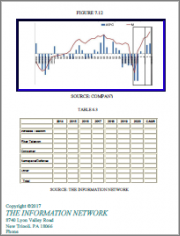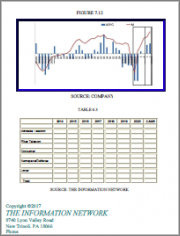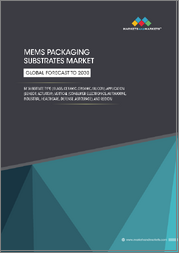
|
시장보고서
상품코드
1702225
반도체 패키징 시장 규모, 점유율, 동향, 예측 : 유형, 패키지 재료, 기술, 최종사용자, 지역별(2025-2033년)Semiconductor Packaging Market Size, Share, Trends and Forecast by Type, Packaging Material, Technology, End User, and Region, 2025-2033 |
||||||
반도체 패키징 세계 시장 규모는 2024년 375억 달러에 달했습니다. 향후 IMARC Group은 2033년에는 682억 달러에 달할 것으로 예상하며, 2025-2033년 CAGR은 6.81%에 달할 것으로 예측합니다. 현재 아시아태평양이 시장을 독점하고 있으며, 2024년 시장 점유율은 54.3%를 초과했습니다. 첨단 패키징 기술에 대한 막대한 투자, 탄력적인 반도체 제조 환경, 소비자 전자제품에 대한 수요 확대가 반도체 패키징 시장 점유율 확대에 기여하고 있습니다.
반도체 패키징 시장 분석:
시장 성장 및 규모 : 세계 시장은 스마트폰, IoT 기기, 차량용 전자제품 등 첨단 전자제품에 대한 수요 증가에 힘입어 강력한 성장세를 보이고 있습니다. 최신 정보에 따르면, 시장 규모는 상당한 규모이며, 아시아태평양은 전자제품 제조에서 지배적인 위치를 차지하고 있어 가장 큰 시장 점유율을 차지하고 있습니다.
주요 시장 촉진요인 : 주요 촉진요인으로는 커넥티드 디바이스의 증가, 고성능 컴퓨팅에 대한 수요 증가, 소비자 전자제품의 지속적인 진화 등을 들 수 있습니다. 특히 전기자동차 및 첨단 운전자 보조 시스템(ADAS)에서 자동차 산업이 반도체 솔루션에 대한 의존도를 높이고 있는 것이 시장 촉진요인으로 크게 기여하고 있습니다.
기술 발전 : 현재 진행 중인 기술 발전은 소형화, 3D 집적화, 이종 집적화에 중점을 두어 컴팩트한 폼팩터 내에서 더 높은 수준의 기능을 구현합니다. 시스템 인 패키지(SiP), 팬 아웃 웨이퍼 레벨 패키징(FOWLP)과 같은 첨단 패키징 기술이 각광을 받고 있습니다.
산업 응용 : 반도체 패키징은 가전, 자동차, 헬스케어, IT 및 통신, 항공우주 및 방위 등 다양한 산업에서 광범위하게 사용되고 있습니다. 이 산업의 적응성은 5G, 인공지능, 사물인터넷(IoT)과 같은 신흥 기술에 대한 기여도에서도 알 수 있습니다.
주요 시장 동향 : 현재 추세는 열 성능 향상, 에너지 효율성 강화, 기능성 향상을 위한 첨단 패키징 솔루션으로의 전환을 포함합니다. 지속가능성 및 친환경 포장재는 세계 환경 이니셔티브에 따라 눈에 띄는 트렌드가 되고 있습니다.
지리적 동향 : 아시아태평양은 중국, 일본, 한국, 대만 등에 주요 기업들이 진출하여 주요 제조 거점 역할을 하고 있습니다. 북미와 유럽은 기술 혁신과 IT, 헬스케어, 자동차 분야에서의 응용에 힘입어 크게 기여하고 있습니다.
경쟁 환경 : 경쟁 환경은 주요 기업들이 R&D에 투자하고, 전략적 파트너십을 맺고, 역량과 시장 입지를 강화하기 위해 M&A를 수행하는 것으로 특징지어집니다. 기업들은 지속적인 혁신, 협업, 전자 산업의 역동적인 요구에 대한 대응을 통해 관련성을 유지하는 데 주력하고 있습니다.
도전과 기회 : 도전과제로는 3D 통합의 복잡성 대응, 방열 관리, 비용 효율적인 제조 공정 확보 등이 있습니다. 기회요인으로는 신흥 기술을 위한 솔루션 개발, 미개척 시장 개척, 전기자동차의 첨단 패키징 수요에 대한 대응 등을 들 수 있습니다.
향후 전망 : 세계 시장의 향후 전망은 유망하며, 그 원동력은 지속적인 기술 발전, 다양한 산업 분야에서의 응용 분야 증가, 세계 전자 시장의 지속적인 성장에 있습니다. 기술 혁신의 기회, 지속가능성, 진화하는 소비자 요구에 대한 대응이 향후 몇 년 동안 시장 성장을 형성할 것입니다.
반도체 패키징 시장 동향:
급속한 기술 발전과 소형화
이 시장은 끊임없는 기술 발전과 현재 진행 중인 소형화 추세에 힘입어 성장하고 있습니다. 전자기기의 고기능화 및 소형화에 따라 반도체 패키징의 소형화 및 고효율화에 대한 요구가 증가하고 있으며, 3D 패키지 및 시스템 인 패키지(SiP)와 같은 첨단 패키징 기술은 더 많은 부품을 하나의 패키지에 통합하여 전체 디바이스의 성능 및 기능을 향상시킬 수 있습니다. 성능과 기능을 향상시킵니다. 소형화는 스마트하고 휴대 가능한 기기를 원하는 소비자의 선호를 충족시킬 뿐만 아니라, 공간 제약이 가장 중요한 차량용 전자제품 및 IoT 장치와 같은 애플리케이션에서 중요한 역할을 합니다.
반도체 소자의 복잡화
반도체 소자의 복잡성은 패키징 시장의 중요한 촉진제입니다. 반도체 부품의 고성능화 및 다기능화에 따라 첨단 패키징 솔루션의 필요성이 증가하고 있습니다. 고성능 프로세서, 메모리 모듈, 시스템온칩(SoC)과 같은 복잡한 디바이스는 최적의 성능, 열 관리 및 신뢰성을 보장하기 위해 첨단 패키징 기술을 필요로 합니다. 패키징 업계는 복잡한 반도체 아키텍처가 가져오는 고유한 과제에 대응하는 혁신적인 솔루션을 개발하여 전체 반도체 패키징 시장의 성장에 기여하고 있습니다.
이종집적에 대한 수요 증가
이종 통합은 다양한 반도체 기술을 하나의 패키지에 통합하는 것으로, 시장을 활성화하는 중요한 요소입니다. 이러한 통합은 성능, 에너지 효율, 비용 효율을 향상시키기 위해 서로 다른 재료, 공정, 기술을 결합하여 성능, 에너지 효율, 비용 효율을 향상시키는 것을 포함합니다. 인공지능(AI) 및 5G 네트워크와 같은 애플리케이션은 단일 칩에 다양한 기능을 원활하게 통합할 수 있기 때문에 이기종 통합의 이점을 누릴 수 있습니다. 이기종 통합에 대한 수요는 시스템 수준의 성능 향상 추구와 공간 제약이 있는 전자제품에 다양한 기능을 탑재해야 하는 필요성에 의해 추진되고 있으며, 전 세계 산업 환경을 형성하는 매우 중요한 힘으로 작용하고 있습니다.
목차
제1장 서문
제2장 조사 범위와 조사 방법
- 조사 목적
- 이해관계자
- 데이터 소스
- 1차 정보
- 2차 정보
- 시장 추정
- 상향식 접근
- 하향식 접근
- 조사 방법
제3장 주요 요약
제4장 소개
- 개요
- 주요 업계 동향
제5장 세계의 반도체 패키징 시장
- 시장 개요
- 시장 실적
- COVID-19의 영향
- 시장 예측
제6장 시장 내역 : 유형별
- 플립칩
- 임베디드 DIE
- 팬 인 WLP
- 팬 아웃 WLP
제7장 시장 내역 : 패키지 재료별
- 유기 기질
- 본딩 와이어
- 리드 프레임
- 세라믹 패키지
- 다이 어태치재
- 기타
제8장 시장 내역 : 기술별
- 그리드 배열
- 스몰 아웃라인 패키지
- 플랫 무연 패키지
- 듀얼 인라인 패키지
- 기타
제9장 시장 내역 : 최종사용자별
- 가전
- 자동차
- 헬스케어
- IT·통신
- 항공우주 및 방위
- 기타
제10장 시장 내역 : 지역별
- 북미
- 미국
- 캐나다
- 아시아태평양
- 중국
- 일본
- 인도
- 한국
- 호주
- 인도네시아
- 기타
- 유럽
- 독일
- 프랑스
- 영국
- 이탈리아
- 스페인
- 러시아
- 기타
- 라틴아메리카
- 브라질
- 멕시코
- 기타
- 중동 및 아프리카
- 시장 내역 : 국가별
제11장 SWOT 분석
- 개요
- 강점
- 약점
- 기회
- 위협
제12장 밸류체인 분석
제13장 Porter's Five Forces 분석
- 개요
- 구매자의 교섭력
- 공급 기업의 교섭력
- 경쟁 정도
- 신규 참여업체의 위협
- 대체품의 위협
제14장 가격 분석
제15장 경쟁 구도
- 시장 구조
- 주요 기업
- 주요 기업 개요
- Amkor Technology Inc.
- ASE Group
- ChipMOS Technologies Inc.
- Fujitsu Limited
- Intel Corporation
- International Business Machines Corporation
- Jiangsu Changjiang Electronics Technology Co., Ltd.
- Powertech Technology Inc.
- Qualcomm Incorporated
- Samsung Electronics Co. Ltd.
- STMicroelectronics International N.V.
- Taiwan Semiconductor Manufacturing Company Limited
- Texas Instruments Incorporated
The global semiconductor packaging market size was valued at USD 37.5 Billion in 2024. Looking forward, IMARC Group estimates the market to reach USD 68.2 Billion by 2033, exhibiting a CAGR of 6.81% from 2025-2033. Asia Pacific currently dominates the market, holding a market share of over 54.3% in 2024. Substantial investments in leading-edge packaging technologies, resilient semiconductor manufacturing landscape, and magnifying need for consumer electronics, are contributing to the semiconductor packaging market share expansion.
Semiconductor Packaging Market Analysis:
Market Growth and Size: The global market is experiencing robust growth, driven by increasing demand for advanced electronics, including smartphones, IoT devices, and automotive electronics. As of the latest available information, the market size is substantial, with Asia Pacific holding the largest share due to its dominant position in electronics manufacturing.
Major Market Drivers: Key drivers include the growth of connected devices, rising demand for high-performance computing, and the continuous evolution of consumer electronics. The automotive industry's increasing reliance on semiconductor solutions, especially in electric vehicles and advanced driver-assistance systems (ADAS), contributes significantly to market growth.
Technological Advancements: Ongoing technological advancements focus on miniaturization, 3D integration, and heterogeneous integration, enabling higher levels of functionality within compact form factors. Advanced packaging technologies such as System-in-Package (SiP) and Fan-Out Wafer-Level Packaging (FOWLP) are gaining prominence.
Industry Applications: Semiconductor packaging finds extensive applications across diverse industries, including consumer electronics, automotive, healthcare, IT and telecommunications, and aerospace and defense. The industry's adaptability is evident in its contributions to emerging technologies like 5G, artificial intelligence, and the Internet of Things (IoT).
Key Market Trends: Current trends include a shift towards advanced packaging solutions for improved thermal performance, enhanced energy efficiency, and increased functionality. Sustainability and eco-friendly packaging materials are becoming prominent trends, aligning with global environmental initiatives.
Geographical Trends: Asia Pacific remains a dominant force in the market, serving as a major manufacturing hub with key players located in countries like China, Japan, South Korea, and Taiwan. North America and Europe contribute significantly, driven by technological innovation and applications in IT, healthcare, and automotive sectors.
Competitive Landscape: The competitive landscape is characterized by key players investing in research and development, forming strategic partnerships, and engaging in mergers and acquisitions to enhance capabilities and market presence. Companies are focused on maintaining relevance through continuous innovation, collaboration, and addressing the dynamic needs of the electronics industry.
Challenges and Opportunities: Challenges include addressing the complexities of 3D integration, managing heat dissipation, and ensuring cost-effective manufacturing processes. Opportunities lie in developing solutions for emerging technologies, expanding into untapped markets, and meeting the demand for advanced packaging in electric vehicles.
Future Outlook: The future outlook for the global market is promising, driven by ongoing technological advancements, increasing applications in various industries, and the continued growth of the electronics market globally. Opportunities for innovation, sustainability, and addressing evolving consumer demands will shape the growth of the market in the coming years.
Semiconductor Packaging Market Trends:
Rapid technological advancements and miniaturization
The market is propelled by continuous technological advancements and the ongoing trend of miniaturization. As electronic devices become more sophisticated and compact, there is an increasing demand for smaller and more efficient semiconductor packages. Advancements in packaging technologies, such as 3D packaging and System-in-Package (SiP), enable the integration of more components into a single package, enhancing overall device performance and functionality. Miniaturization not only caters to consumer preferences for sleek and portable gadgets but also plays a crucial role in applications like automotive electronics and IoT devices, where space constraints are paramount.
Increasing complexity of semiconductor devices
The growing complexity of semiconductor devices is a significant driver for the packaging market. As semiconductor components become more powerful and multifunctional, the need for advanced packaging solutions rises. Complex devices, including high-performance processors, memory modules, and system-on-chips (SoCs), require sophisticated packaging techniques to ensure optimal performance, thermal management, and reliability. The packaging industry responds by developing innovative solutions that address the specific challenges posed by intricate semiconductor architectures, contributing to the overall growth of the semiconductor packaging market.
Rising demand for heterogeneous integration
Heterogeneous integration, the amalgamation of diverse semiconductor technologies into a single package, is a key factor fueling the market. This integration involves combining different materials, processes, and technologies to achieve improved performance, energy efficiency, and cost-effectiveness. Applications like artificial intelligence (AI) and 5G networks benefit from heterogeneous integration as it enables the seamless incorporation of various functionalities on a single chip. The demand for heterogeneous integration is driven by the pursuit of enhanced system-level performance and the need to accommodate diverse functionalities within space-constrained electronic devices, making it a pivotal force shaping the landscape of the global industry.
Semiconductor Packaging Industry Segmentation:
Breakup by Type:
- Flip Chip
- Embedded DIE
- Fan-in WLP
- Fan-out WLP
Flip chip account for the majority of the market share
Breakup by Packaging Material:
- Organic Substrate
- Bonding Wire
- Leadframe
- Ceramic Package
- Die Attach Material
- Others
Organic substrate holds the largest share of the industry
Breakup by Technology:
- Grid Array
- Small Outline Package
- Flat no-leads Package
- Dual In-Line Package
- Others
Grid array represents the leading market segment
Breakup by End User:
- Consumer Electronics
- Automotive
- Healthcare
- IT and Telecommunication
- Aerospace and Defense
- Others
Consumer electronics represents the leading market segment
Breakup by Region:
- North America
- United States
- Canada
- Asia-Pacific
- China
- Japan
- India
- South Korea
- Australia
- Indonesia
- Others
- Europe
- Germany
- France
- United Kingdom
- Italy
- Spain
- Russia
- Others
- Latin America
- Brazil
- Mexico
- Others
- Middle East and Africa
Asia Pacific leads the market, accounting for the largest semiconductor packaging market share
The market research report has also provided a comprehensive analysis of all the major regional markets, which include North America (the United States and Canada); Asia Pacific (China, Japan, India, South Korea, Australia, Indonesia, and others); Europe (Germany, France, the United Kingdom, Italy, Spain, Russia, and others); Latin America (Brazil, Mexico, and others); and the Middle East and Africa. According to the report, Asia Pacific accounted for the largest market share.
The market research report has provided a comprehensive analysis of the competitive landscape. Detailed profiles of all major companies have also been provided. Some of the key players in the market include:
- Amkor Technology Inc.
- ASE Group
- ChipMOS Technologies Inc.
- Fujitsu Limited
- Intel Corporation
- International Business Machines Corporation
- Jiangsu Changjiang Electronics Technology Co., Ltd.
- Powertech Technology Inc.
- Qualcomm Incorporated
- Samsung Electronics Co. Ltd.
- STMicroelectronics International N.V.
- Taiwan Semiconductor Manufacturing Company Limited
- Texas Instruments Incorporated
Key Questions Answered in This Report
- 1.How big is the semiconductor packaging market?
- 2.What is the future outlook of semiconductor packaging market?
- 3.What are the key factors driving the semiconductor packaging market?
- 4.Which region accounts for the largest semiconductor packaging market share?
- 5.Which are the leading companies in the global semiconductor packaging market?
Table of Contents
1 Preface
2 Scope and Methodology
- 2.1 Objectives of the Study
- 2.2 Stakeholders
- 2.3 Data Sources
- 2.3.1 Primary Sources
- 2.3.2 Secondary Sources
- 2.4 Market Estimation
- 2.4.1 Bottom-Up Approach
- 2.4.2 Top-Down Approach
- 2.5 Forecasting Methodology
3 Executive Summary
4 Introduction
- 4.1 Overview
- 4.2 Key Industry Trends
5 Global Semiconductor Packaging Market
- 5.1 Market Overview
- 5.2 Market Performance
- 5.3 Impact of COVID-19
- 5.4 Market Forecast
6 Market Breakup by Type
- 6.1 Flip Chip
- 6.1.1 Market Trends
- 6.1.2 Market Forecast
- 6.2 Embedded DIE
- 6.2.1 Market Trends
- 6.2.2 Market Forecast
- 6.3 Fan-in WLP
- 6.3.1 Market Trends
- 6.3.2 Market Forecast
- 6.4 Fan-out WLP
- 6.4.1 Market Trends
- 6.4.2 Market Forecast
7 Market Breakup by Packaging Material
- 7.1 Organic Substrate
- 7.1.1 Market Trends
- 7.1.2 Market Forecast
- 7.2 Bonding Wire
- 7.2.1 Market Trends
- 7.2.2 Market Forecast
- 7.3 Leadframe
- 7.3.1 Market Trends
- 7.3.2 Market Forecast
- 7.4 Ceramic Package
- 7.4.1 Market Trends
- 7.4.2 Market Forecast
- 7.5 Die Attach Material
- 7.5.1 Market Trends
- 7.5.2 Market Forecast
- 7.6 Others
- 7.6.1 Market Trends
- 7.6.2 Market Forecast
8 Market Breakup by Technology
- 8.1 Grid Array
- 8.1.1 Market Trends
- 8.1.2 Market Forecast
- 8.2 Small Outline Package
- 8.2.1 Market Trends
- 8.2.2 Market Forecast
- 8.3 Flat no-leads Package
- 8.3.1 Market Trends
- 8.3.2 Market Forecast
- 8.4 Dual In-Line Package
- 8.4.1 Market Trends
- 8.4.2 Market Forecast
- 8.5 Others
- 8.5.1 Market Trends
- 8.5.2 Market Forecast
9 Market Breakup by End User
- 9.1 Consumer Electronics
- 9.1.1 Market Trends
- 9.1.2 Market Forecast
- 9.2 Automotive
- 9.2.1 Market Trends
- 9.2.2 Market Forecast
- 9.3 Healthcare
- 9.3.1 Market Trends
- 9.3.2 Market Forecast
- 9.4 IT and Telecommunication
- 9.4.1 Market Trends
- 9.4.2 Market Forecast
- 9.5 Aerospace and Defense
- 9.5.1 Market Trends
- 9.5.2 Market Forecast
- 9.6 Others
- 9.6.1 Market Trends
- 9.6.2 Market Forecast
10 Market Breakup by Region
- 10.1 North America
- 10.1.1 United States
- 10.1.1.1 Market Trends
- 10.1.1.2 Market Forecast
- 10.1.2 Canada
- 10.1.2.1 Market Trends
- 10.1.2.2 Market Forecast
- 10.1.1 United States
- 10.2 Asia-Pacific
- 10.2.1 China
- 10.2.1.1 Market Trends
- 10.2.1.2 Market Forecast
- 10.2.2 Japan
- 10.2.2.1 Market Trends
- 10.2.2.2 Market Forecast
- 10.2.3 India
- 10.2.3.1 Market Trends
- 10.2.3.2 Market Forecast
- 10.2.4 South Korea
- 10.2.4.1 Market Trends
- 10.2.4.2 Market Forecast
- 10.2.5 Australia
- 10.2.5.1 Market Trends
- 10.2.5.2 Market Forecast
- 10.2.6 Indonesia
- 10.2.6.1 Market Trends
- 10.2.6.2 Market Forecast
- 10.2.7 Others
- 10.2.7.1 Market Trends
- 10.2.7.2 Market Forecast
- 10.2.1 China
- 10.3 Europe
- 10.3.1 Germany
- 10.3.1.1 Market Trends
- 10.3.1.2 Market Forecast
- 10.3.2 France
- 10.3.2.1 Market Trends
- 10.3.2.2 Market Forecast
- 10.3.3 United Kingdom
- 10.3.3.1 Market Trends
- 10.3.3.2 Market Forecast
- 10.3.4 Italy
- 10.3.4.1 Market Trends
- 10.3.4.2 Market Forecast
- 10.3.5 Spain
- 10.3.5.1 Market Trends
- 10.3.5.2 Market Forecast
- 10.3.6 Russia
- 10.3.6.1 Market Trends
- 10.3.6.2 Market Forecast
- 10.3.7 Others
- 10.3.7.1 Market Trends
- 10.3.7.2 Market Forecast
- 10.3.1 Germany
- 10.4 Latin America
- 10.4.1 Brazil
- 10.4.1.1 Market Trends
- 10.4.1.2 Market Forecast
- 10.4.2 Mexico
- 10.4.2.1 Market Trends
- 10.4.2.2 Market Forecast
- 10.4.3 Others
- 10.4.3.1 Market Trends
- 10.4.3.2 Market Forecast
- 10.4.1 Brazil
- 10.5 Middle East and Africa
- 10.5.1 Market Trends
- 10.5.2 Market Breakup by Country
- 10.5.3 Market Forecast
11 SWOT Analysis
- 11.1 Overview
- 11.2 Strengths
- 11.3 Weaknesses
- 11.4 Opportunities
- 11.5 Threats
12 Value Chain Analysis
13 Porters Five Forces Analysis
- 13.1 Overview
- 13.2 Bargaining Power of Buyers
- 13.3 Bargaining Power of Suppliers
- 13.4 Degree of Competition
- 13.5 Threat of New Entrants
- 13.6 Threat of Substitutes
14 Price Analysis
15 Competitive Landscape
- 15.1 Market Structure
- 15.2 Key Players
- 15.3 Profiles of Key Players
- 15.3.1 Amkor Technology Inc.
- 15.3.1.1 Company Overview
- 15.3.1.2 Product Portfolio
- 15.3.1.3 Financials
- 15.3.1.4 SWOT Analysis
- 15.3.2 ASE Group
- 15.3.2.1 Company Overview
- 15.3.2.2 Product Portfolio
- 15.3.2.3 Financials
- 15.3.3 ChipMOS Technologies Inc.
- 15.3.3.1 Company Overview
- 15.3.3.2 Product Portfolio
- 15.3.3.3 Financials
- 15.3.4 Fujitsu Limited
- 15.3.4.1 Company Overview
- 15.3.4.2 Product Portfolio
- 15.3.4.3 Financials
- 15.3.4.4 SWOT Analysis
- 15.3.5 Intel Corporation
- 15.3.5.1 Company Overview
- 15.3.5.2 Product Portfolio
- 15.3.5.3 Financials
- 15.3.5.4 SWOT Analysis
- 15.3.6 International Business Machines Corporation
- 15.3.6.1 Company Overview
- 15.3.6.2 Product Portfolio
- 15.3.6.3 Financials
- 15.3.6.4 SWOT Analysis
- 15.3.7 Jiangsu Changjiang Electronics Technology Co., Ltd.
- 15.3.7.1 Company Overview
- 15.3.7.2 Product Portfolio
- 15.3.7.3 Financials
- 15.3.8 Powertech Technology Inc.
- 15.3.8.1 Company Overview
- 15.3.8.2 Product Portfolio
- 15.3.8.3 Financials
- 15.3.8.4 SWOT Analysis
- 15.3.9 Qualcomm Incorporated
- 15.3.9.1 Company Overview
- 15.3.9.2 Product Portfolio
- 15.3.9.3 Financials
- 15.3.9.4 SWOT Analysis
- 15.3.10 Samsung Electronics Co. Ltd.
- 15.3.10.1 Company Overview
- 15.3.10.2 Product Portfolio
- 15.3.10.3 Financials
- 15.3.10.4 SWOT Analysis
- 15.3.11 STMicroelectronics International N.V.
- 15.3.11.1 Company Overview
- 15.3.11.2 Product Portfolio
- 15.3.11.3 Financials
- 15.3.11.4 SWOT Analysis
- 15.3.12 Taiwan Semiconductor Manufacturing Company Limited
- 15.3.12.1 Company Overview
- 15.3.12.2 Product Portfolio
- 15.3.12.3 Financials
- 15.3.12.4 SWOT Analysis
- 15.3.13 Texas Instruments Incorporated
- 15.3.13.1 Company Overview
- 15.3.13.2 Product Portfolio
- 15.3.13.3 Financials
- 15.3.13.4 SWOT Analysis
- 15.3.1 Amkor Technology Inc.



















